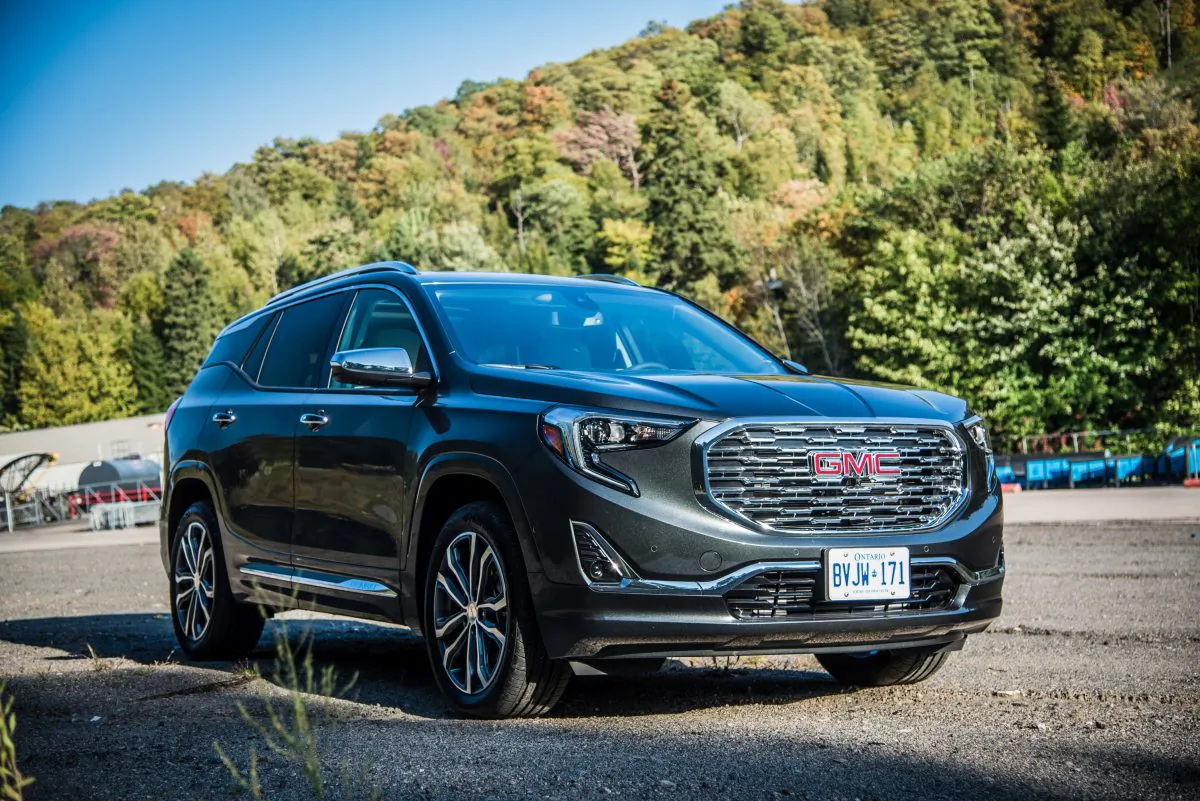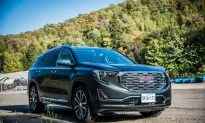Embodying what GMC calls the next chapter of design, its Terrain compact SUV is almost unrecognizable as it enters 2018 wearing a completely new outfit head to toe. The shapely 2018 model looks more aerodynamic than ever before and is packing a trio of fresh powertrains under the hood.
At a recent press presentation in Quebec, GMC brand manager and self-proclaimed “Terrain-aholic” Mark Alger explained the key changes as the crossover enters generation two.
“How is the 2017 Terrain different from the ’18? One word: everything. Bumper to bumper, rubber to roof there is no common piece of aluminum or metal or computer chip,” said Alger.
There is no denying it—the vehicle looks good. It’s made a few passes through the wind tunnel while being crafted, which is why lines on the car are so smooth and sculpted. The headlamps and tail lamps have been given unique “C” shape housings, each containing LED lighting elements.
Sold in three trim levels starting at SLE and topping out on the Denali, the latter features signature styling elements such as the slatted satin chrome grille, body colour-painted vs. blacked-out exterior trim pieces, and chroming on the roof rails, door handles, side mirrors, and moulding. The LED headlamps and 19-inch alloy wheels are also standard.

The interior is nice regardless of the grade level, with plenty of aluminum and soft-touch plastics used throughout. Stepping up to Denali, however, adds a heated steering wheel, navigation, Bose stereo system, and a hands-free power liftgate. The front and rear seats now fold flat, increasing the Terrain’s versatility so occupants may load up larger gear for a move or lie down and take a load off on a camping trip.
As mentioned, three new engines are available, all turbocharged: Two are conventional gasoline—an 1.5 L and a 2.0 L—and the other a 1.6 L diesel. The pair of gas vehicles were on hand at the press launch for test drives and my immediate impression was that four cylinders have a come a long way from the days when they were only found in underpowered economy compacts.
The 1.5 L makes 170 horsepower and 203 lb.-ft. of torque, more than enough to propel the crossover in a healthy manner. The extra 82 horsepower and 106 lb.-ft. of the 2.0 L is definitely noticeable though, especially climbing hills, and this is the one those with potentially something to tow will want to choose, since it has a 3,500-pound maximum trailering capacity. Both are mated to smooth-shifting Hydra-Matic nine-speed transmissions.
Front-wheel drive is offered on the base 1.5 or 1.6 diesel SLE, yielding fuel consumption numbers of approximately 8.6 and 7.4 L/100 km respectively, in combined city and highway driving. All-wheel drive owners worry not, selectable axle-disconnect means AWD variants can essentially mimic FWD when the extra grip is not needed, achieving an estimated combined 10.2 L/100 km. The mode is activated via a twist of the Traction Select knob located behind the centre cup holders.
Like all other GM products, the Terrain is technology-forward. When the Rear Seat Reminder is turned on, drivers are reminded to check the back bench prior to exiting the cabin. Teen Driver technology gives parents peace of mind by allowing limits to be set on certain vehicle functions and generates a report card providing detailed statistics of how their kids performed behind the wheel. The active safety tech portfolio has been expanded as well and includes a 360-degree camera, low-speed emergency braking, and lane keep assist and departure warning.
MSRP starts at $30,195.
Benjamin Yong is a freelance writer from Vancouver, B.C., and a member of the Automobile Journalists Association of Canada (AJAC). Follow him on Twitter @b_yong


 Friends Read Free
Copy
Facebook
Tweet
Friends Read Free
Copy
Facebook
Tweet




























